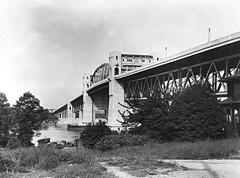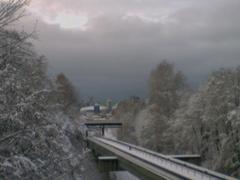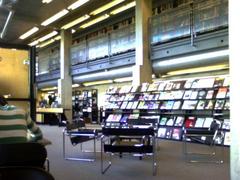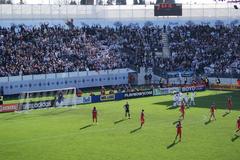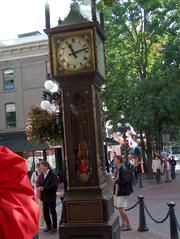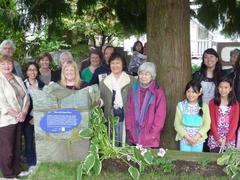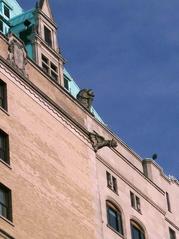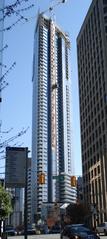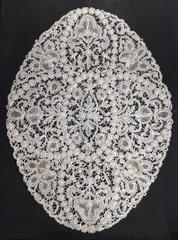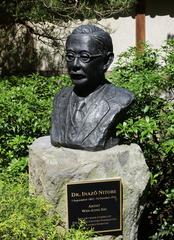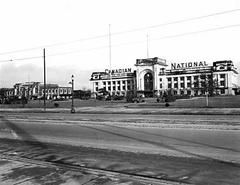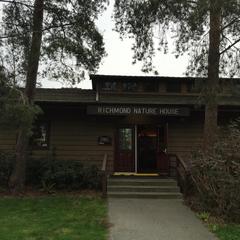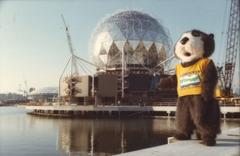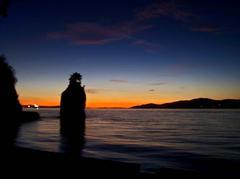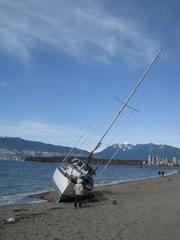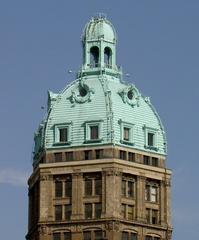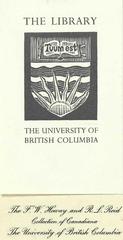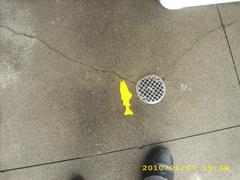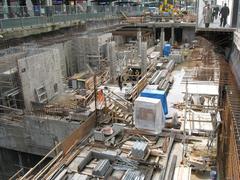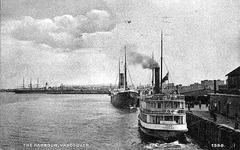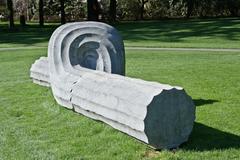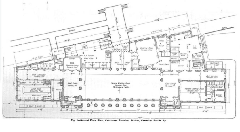Langara–49th Avenue Station Visiting Guide: Vancouver Historical Sites
Date: 15/06/2025
Introduction: The Significance of Langara–49th Avenue Station
Langara–49th Avenue Station stands as a pivotal hub in Vancouver’s Canada Line network, linking downtown Vancouver, Richmond, and Vancouver International Airport. Situated at the northeast corner of Cambie Street and West 49th Avenue, it serves daily commuters, students from nearby Langara College, and visitors drawn to Vancouver’s vibrant neighborhoods and rich cultural sites. Opened in 2009 and designed by VIA Architecture, the station exemplifies sustainable transit and community integration, aligning with the City of Vancouver’s Cambie Corridor Plan and acknowledging the unceded territories of the Musqueam, Squamish, and Tsleil-Waututh Nations.
This guide details the station’s operating hours, ticketing, accessibility, architecture, adjacent attractions, and practical travel tips. For current transit schedules and fares, consult TransLink’s Official Site and Langara College.
Contents
- Introduction
- Origins and Naming
- Development and Opening
- Visitor Information: Hours, Tickets, and Accessibility
- How to Get There
- Architectural Features
- Nearby Attractions and Photographic Spots
- Role in Urban Planning and Indigenous Significance
- Tips for Visitors
- Frequently Asked Questions (FAQs)
- Conclusion
- Internal and External Links
Origins and Naming
Langara–49th Avenue Station reflects the local Langara neighborhood, named after Spanish admiral Juan de Lángara, and its intersection with 49th Avenue. During the planning phase, the station was referred to as “49th Avenue” but was renamed in 2006 to better represent the surrounding community and its proximity to Langara College.
Development and Opening
Launched in 2009 with the opening of the Canada Line, the station was designed by VIA Architecture to embody sustainable, community-centered transit. It’s a core part of transit-oriented development along the Cambie Corridor, enhancing connectivity and supporting urban growth (The Canada Line History).
Visitor Information: Hours, Tickets, and Accessibility
- Operating Hours: Daily from approximately 5:00 AM to 1:00 AM, aligned with SkyTrain service hours. For precise times, check TransLink’s schedule.
- Ticket Options: Purchase single-ride tickets, day passes, or reloadable Compass Cards at station vending machines. Fares depend on travel zones; use the TransLink fare calculator for up-to-date pricing.
- Accessibility: The station is fully accessible, with elevators, escalators, tactile guidance, and audio/visual announcements for travelers with mobility or sensory challenges.
How to Get There
- SkyTrain: Easily accessible on the Canada Line.
- Bus: Served by the #15 Cambie and #49 bus routes, connecting to local and regional destinations.
- Cycling: Bike lanes and the Ontario Greenway provide active transportation options, with secure bike racks at the station.
Architectural Features
Langara–49th Avenue Station is an underground facility with two side platforms connected by a corridor beneath the tracks. Its entrance, marked by a distinctive glass and metal pavilion, maximizes natural light and safety. The minimalist design blends with the Cambie Corridor’s urban landscape, while wide corridors, clear bilingual signage, and a functional layout ensure a comfortable passenger experience.
Nearby Attractions and Photographic Spots
- Langara College: Vibrant campus east of the station, offering public events and art exhibits.
- Langara Golf Course: Public 18-hole course within walking distance.
- Parks: Nearby Langara Park, Tisdall Park, Columbia Park, and Cambie Park offer green spaces for relaxation.
- Punjabi Market: Main Street’s celebrated South Asian shopping and dining district.
- Indigenous Gardens and Stewardship Pavilion: Reflecting local Indigenous heritage.
The station’s architecture and nearby parks provide excellent opportunities for photography.
Role in Urban Planning and Indigenous Significance
As a cornerstone of the Cambie Corridor Plan, the station supports transit-oriented development and sustainable growth. Located on the unceded territories of the Musqueam, Squamish, and Tsleil-Waututh Nations, the area features culturally significant initiatives that promote reconciliation and Indigenous heritage (Vancouver City Council Report).
Tips for Visitors
- Use a Compass Card for seamless travel.
- Visit during off-peak hours for a more relaxed experience.
- Explore the neighborhood’s cultural sites and parks on foot or by bike.
- Utilize accessibility features as needed.
Frequently Asked Questions (FAQs)
Q: What are the ticket prices at Langara–49th Avenue Station?
A: Fares vary by travel zone. Check TransLink’s fare page for up-to-date pricing.
Q: Is the station wheelchair accessible?
A: Yes, with elevators, ramps, and tactile guidance.
Q: Are guided tours available?
A: No formal tours of the station, but nearby sites may offer their own tours.
Q: What are the station’s hours?
A: Approximately 5:00 AM to 1:00 AM daily.
Q: Is there secure bike parking?
A: Yes, bike racks are available at the entrance.
Conclusion
Langara–49th Avenue Station is a model of modern transit design, sustainability, and cultural integration. It provides unrivaled access to Vancouver’s neighborhoods, parks, and institutions, making it ideal for commuters, students, and visitors alike. For the latest updates and travel resources, visit TransLink’s website or download the Audiala app for real-time transit information.
Internal Links
External Links
Exploring Nearby Historic Sites
Gastown: Vancouver’s Historic Heart
Overview:
Gastown, Vancouver’s oldest neighborhood, boasts cobblestone streets, Victorian architecture, and a lively arts scene (City of Vancouver Official Site). Established in 1867 by “Gassy” Jack Deighton, Gastown is a National Historic Site renowned for its boutique shops, galleries, and diverse dining.
Visiting Information:
Gastown is open to the public year-round. Shops and attractions typically open from 10:00 AM to 8:00 PM. The area is highly accessible, with SkyTrain access from Waterfront Station and multiple bus lines.
Key Attractions:
- Steam Clock: Iconic steam-powered clock at Water and Cambie streets.
- Maple Tree Square: The historic core with statues and heritage plaques.
- Vancouver Police Museum: Engages visitors with the city’s criminal history.
- Dining & Shopping: Unique boutiques, galleries, and eateries.
Events:
Major events include the Gastown Grand Prix cycling race and seasonal festivals. Guided walking tours are available, focusing on history, architecture, and local legends.
Tips:
Wear comfortable shoes, respect local businesses, and bring your camera for the Steam Clock and architecture.
More Information:
Oakridge Centre: A Community Landmark
History and Redevelopment:
Oakridge Centre, opened in 1959 as Vancouver’s first shopping mall, is now being transformed into Oakridge Park—a modern mixed-use destination with retail, dining, green spaces, and cultural amenities (Vancouver.ca).
Visiting Hours:
Most retail spaces open 10:00 AM–9:00 PM (Mon–Sat), 11:00 AM–7:00 PM (Sun). Entry is free; some events may require tickets (Oakridge Park website).
Getting There:
The mall is conveniently located near Langara–49th Avenue SkyTrain Station and is served by bus routes 15, 49, and N15. Facilities are fully accessible.
Nearby Attractions:
- Langara College: Public art and events.
- Langara Golf Course: 18-hole public course.
- VanDusen Botanical Garden: 55-acre botanical garden north of Oakridge.
Events and Tours:
Guided tours and seasonal events are scheduled throughout the year; check the Oakridge Park event calendar for details.
Summary and Recommendations
Langara–49th Avenue Station exemplifies the integration of modern architecture, sustainable urban planning, and cultural respect. Its accessibility, connectivity, and proximity to community institutions make it a premier entry point for exploring Vancouver. Visitors are encouraged to use a Compass Card, plan via TransLink’s trip planner, visit during quieter hours, and explore the rich culture and parks nearby. The station’s relevance in the Cambie Corridor Plan and its recognition of Indigenous heritage further highlight its significance in Vancouver’s story of growth and reconciliation.
For further resources, visit:
Reliable Sources and Official Links
- Langara–49th Avenue Station: Visiting Hours, Tickets, and Vancouver Historical Sites Guide, 2025, TransLink & City of Vancouver (https://www.translink.ca)
- Langara–49th Avenue Station Visiting Hours, Tickets & Architectural Highlights in Vancouver, 2025, VIA Architecture & TransLink (https://www.translink.ca/fares)
- Vancouver City Council Report on Cambie Corridor Plan, 2025 (https://council.vancouver.ca/20250204/documents/rr11.pdf)
- The Canada Line History, 2025 (http://thecanadaline.com/station-history/langara-49th/)

